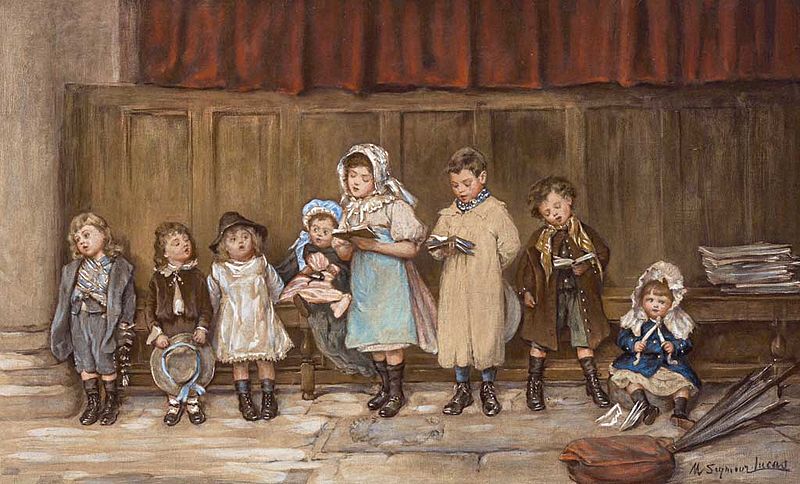
As someone who extols the value of observing Advent and withholding engagement in Christmas activities until deeper into Advent, I also belong to a group that has to get involved in Christmas early: musicians!
If you’ve ever been in a choir or band, you know that Christmas music is handed out as early as September. Some compositions are repeats, so pieces require little rehearsal. But other works are new, complex, and will keep both director and musicians worried until the day of the concert.
A few years ago on the First Sunday of Advent, I stood with friends in the market square in Weimar (our adopted home town in former East Germany) and listened to a women’s choir from a nearby village. It was freezing cold. The Christmas Market was a dazzling wash of white lights, steam from spiced punch, smoke from bratwurst, and wafts of gingerbread and chocolate-covered fruit.
The women in this choir were singing some of the loveliest tunes you can imagine. To my surprise, I recognized none of them. “They’re from DDR times,” my friends said.
DDR Carols? I confess I’d never thought of such a thing. Winsome and seasonal in their style, they had sounded across the Deutsche Demokratische Republik (East Germany) during forty years of Communist rule. The East German government promoted secular holiday festivities, particularly New Year’s, while religious observations for Christmas were highly muted.
Today, of course, religious symbols across Germany are displayed without any apology or concern about political correctness. And, as in America, the sacred and secular mingle at Christmas. So throughout the evening, DDR Carols and traditional sacred Christian hymns were sung with equal gusto.
Singing publicly at Christmas is one of the oldest and most joyful musical activities in our Western culture. We know the term “wassailing” due to popular secular songs of the season. It comes from the Anglo-Saxon greeting Wæs þu hæl which means “Be thou hale,” or in good health.
Wassail, Wassail all over the Town, also called Gloucestershire Wassail, is my favorite, but people may be more familiar with Here We Come A-Wassailing. Popular songs like Twelve Days of Christmas fall into the same tradition. At the center of all of these songs is merry-making, definitely with a common wassail bowl or cup—a brew of ale, sherry, cinnamon sticks, ginger, nutmeg, and lemon. The recipes were the pride and secret of the various villages and vendors. Wassailing belonged to a period of celebration well after Christmas known as Twelfth Night.
Another branch of wassailing links to harvest festivals, particularly in orchards that produced apples for cider. The singing groups of young men could be quite rowdy, in fact. They would wander at harvest time from orchard to orchard, demanding food or drink, somewhat in the spirit of today’s Halloween. The reality of wassailing contrasts completely with the image we hold of scarf-clad gentlemen and gentlewomen gathered to sing on a London town square.
I long for a way for us to bring singing—individual and group—back into the flow of our daily lives. America has not been a singing culture since the generation of my grandparents, many of whom were immigrants from singing cultures in Europe. Today’s teens, who live with ear buds permanently glued to their ears, crumble in embarrassment if you ask them to sing you a song. “I don’t know any songs,” they say. “What? You spend your waking hours listening to music and you don’t know any songs?”
It’s a pet peeve of mine and you probably don’t want to get me started. But, I will say this: nix as much of the electrified and highly produced so-called music as you can, particularly in the upbringing of young children. Return to music-making. Give them the sound of your voice, the humming and whistling of tunes, the singing-in-the-shower type of enthusiastic melody that can go far toward raising the spirits of those who hear it. Take kids (and adult family members) to hear real sound—bands, choirs, orchestras. Seek out “older” types of music: Renaissance choirs, medieval music groups, classical guitar ensembles, hammered dulcimer or harpsichord recitals. Add in as many ethnically interesting acoustical performances as you can, such as ensembles playing steel drum, Indonesian gamelans, or choirs as far ranging as Ugandan children’s choruses and Bulgarian folk choirs.
In short, give yourself, and your family, the joy of pure, powerful sound. Do what you can to pass on the simple truth: music always has been, and still is, the powerful communication that comes when a person opens his mouth or plucks, bows, bangs on, or blows into an instrument. Real musical sound does not need banks of loudspeakers or digital processing. It cannot be conveyed over tiny ear buds, but must be heard live (or at least with very good speakers) to sense its force and message.
Participate in music-making. Sing, play, or if you cannot do that, offer to put up signs, punch tickets, or usher so that you can hear concerts live, in person! And most importantly, find some friends and sing some songs for others to hear. Let there be sour notes and funny moments. Break down between the verses, search the internet for the words, or just plain laugh your way through it. But make music, for music-making will be blessed.



